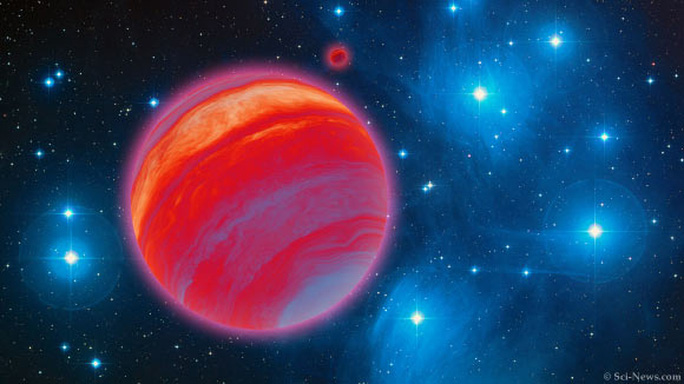Revealed 2 'semi-planets' born out of nowhere, connected through space
Two objects more advanced than the planet but failed to be considered a star, born as a couple but separated by 129 astronomical units.
According to Sci-News, the CWISE pair J014611.20-050850.0AB is the widest pair of brown dwarfs ever identified. 1 astronomical unit (AU) is equal to the distance from the Sun to Earth, which means that this pair of stars is located 129 times more space apart than the Sun and Earth. But they are still a couple, still connected in their own dance.

Brown Dwarf
Brown dwarfs are cool, dim objects about the size of a gas giant and a small star. They are sometimes called failure stars. They are usually too small to sustain hydrogen fusion at the core.
But it is not correct to consider them as planets because they are slightly larger and more "advanced", still retaining some of the properties of stars. They also do not have a parent star but lie alone, born directly from molecular clouds, like a "demigod" in the planetary world, born out of nowhere.
Brown dwarfs are very rarely found in pairs, so the new discovery by a research team led by Arizona State University (USA) is remarkable. More surprisingly, because they are so small compared to stars, brown dwarfs, if paired, are always close to each other. But CWISE J014611.20-050850.0AB is not like that.
The strange pairing was detected from Dark Energy Survey (DES) data, further confirmed by the Keck II Telescope Echellette Near Infrared Spectrometer (NIRES).
The study, just published in the Astrophysical Journal Letters, is expected to contribute to the mystery of the existence and origin of brown dwarfs.
- Unknown mystery about planets outside the solar system
- The 5 most freaky planets in the world have been revealed in the last year
- Russian spacecraft connected to space station
- View Tesla Semi trucks rolling first in the street
- Space sunflowers help take photos of the stars more clearly
- Why are there so many asteroids in the Solar System?
- Discovery ship connects to the ISS for the last time
- Discover more than 700 planets outside the solar system
- Dead planets may be signaling in outer space
- Discover 9 new planets
- This semi-solid, half-liquid material can 'heal' itself
- Telescope catches 70 planets 'born out of nowhere'
 Van Allen's belt and evidence that the Apollo 11 mission to the Moon was myth
Van Allen's belt and evidence that the Apollo 11 mission to the Moon was myth The levels of civilization in the universe (Kardashev scale)
The levels of civilization in the universe (Kardashev scale) Today Mars, the sun and the Earth are aligned
Today Mars, the sun and the Earth are aligned The Amazon owner announced a secret plan to build a space base for thousands of people
The Amazon owner announced a secret plan to build a space base for thousands of people